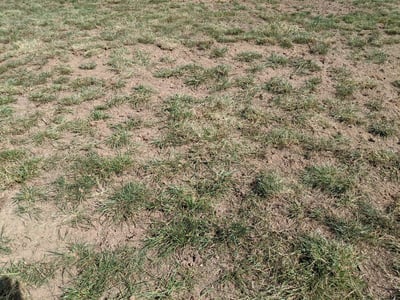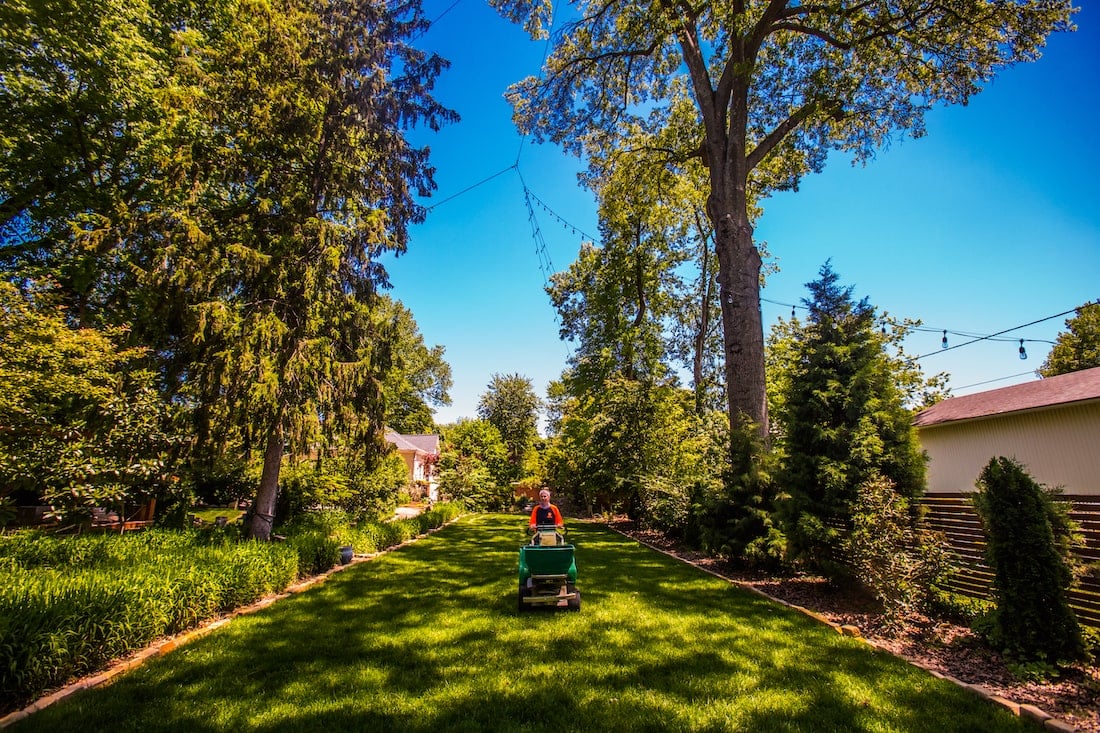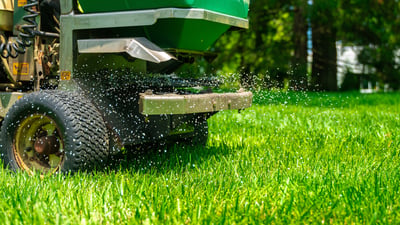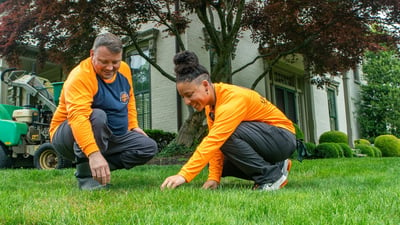


If you have shady areas in your yard where grass refuses to grow, you’re not alone. This is a common challenge for homeowners in Louisville, especially those with mature trees and well-established landscapes.
The reality is that all grass needs sunlight — even shade-tolerant varieties — and limited sun makes it tough to maintain a thick, healthy lawn.
While there’s no perfect fix, there are practical steps that can improve those thin, bare spots.
Here are a few tried-and-true options that can help you get better results in the shaded parts of your yard.
Growing grass in the shade is one of the most frustrating challenges for Louisville homeowners — and for good reason. Grass needs sunlight to thrive, and shaded lawn areas, especially under large trees, often just don’t get enough of it.

Even shade-tolerant grass varieties still require around 4 to 6 hours of filtered sunlight a day. When lawns receive less than that, the grass becomes thin, patchy, or stops growing altogether.
In heavily shaded areas, other factors add to the struggle:
The good news is that you’re not stuck with bare spots forever. There are some practical ways to work with your yard — not against it — and improve how those shaded areas look and feel.
One of the most common go-to solutions for growing grass in shady spots is using a shade-tolerant grass seed mix. These seed blends are specially formulated to perform better in areas that receive less sunlight — but it’s important to understand they still have their limits.
All grass needs sunlight to grow. Even the best shade seed mixtures aren’t a magic fix — they simply tolerate less light, not no light. Most shade grass blends, which often include fine fescues, still need about 4 to 6 hours of filtered sunlight per day to stay healthy.
Power seeding these areas with a quality shade mix can help improve coverage and thickness in thinner spots. Just be prepared to monitor these areas more closely, and manage your expectations — especially if they're heavily shaded by dense tree canopies.
Another effective way to help grass grow in the shade is to reduce the amount of shade itself — and tree pruning is one of the best tools for the job.

Over time, tree canopies naturally become thicker, blocking out the sunlight your lawn needs. Strategic pruning can open up those dense areas, allowing more early morning or late afternoon light to reach the grass below.
When done correctly, tree pruning can:
It’s important to have this done professionally. Pruning too much or in the wrong places can damage a tree — and removing more than 25% of the canopy at once is generally not recommended.
At Limbwalker, our tree care and lawn care teams often work together to strike the right balance between healthy trees and a lawn that can thrive, even in partially shaded spots.
Sometimes, even after using shade-tolerant grass seed and pruning trees, certain areas stay too dark for grass to survive. If you're constantly fighting thin or bare spots, it might be time to consider a different approach.
Here are a few practical alternatives for areas with deep shade:
Installing large mulch rings around the base of trees is a simple and attractive solution. It eliminates the frustration of constantly reseeding bare patches while still keeping your landscape neat and polished.
Instead of struggling to grow grass, you could create plant beds filled with shade-tolerant plants. Ferns, hostas, and other low-light perennials thrive where grass struggles — giving you lush greenery without the headache.
In some cases, decorative gravel or small hardscapes can be a low-maintenance, visually appealing option for areas that refuse to support grass growth.
While we love trees at Limbwalker, there are rare cases when tree removal becomes the only viable option — especially if having a healthy lawn is your top priority. We usually recommend this as a last resort after exploring all other options.

Even with the best strategies — using shade-tolerant seed, pruning trees, or considering creative alternatives — it’s important to set realistic expectations for shady areas of your lawn.
In most cases, grass in shaded spots simply won’t look as thick, lush, or vibrant as grass in sunnier parts of the yard. And that’s completely normal.
A thinner, patchier look under mature trees is a natural trade-off for enjoying the beauty, shade, and environmental benefits that large trees provide. Sometimes, it’s about finding the right balance between maintaining healthy grass and embracing the natural character of your landscape.
The good news is, with the right plan and regular care, you can still have a beautiful, functional yard — even if a few spots look a little different. Managing expectations from the start will help you enjoy your property more without unnecessary frustration.
Every yard is different — and so are your goals for it. Finding the right solution for shady lawn areas often takes a custom approach, based on your property’s conditions and what matters most to you.

At Limbwalker, we offer both lawn care and tree care services, which means we’re able to look at the full picture. Whether it's improving light through tree pruning, selecting the right shade-tolerant grasses, or helping you explore attractive alternatives, we’re here to guide you with honest advice.
While we love trees, we also understand that homeowners want yards they can truly enjoy. Sometimes that means managing expectations about how grass will perform in shaded areas — and sometimes it means making small changes that can make a big difference.
If you’re ready to troubleshoot shady lawn problems at your Louisville, KY home, we’re here to help. Get a Quote for Our Lawn Care Programs Today
Together, we’ll find a solution that fits your needs — so you can get back to enjoying your yard without the constant battle.



